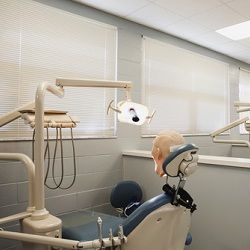UW School of Dentistry Restructures amid Financial Crisis
Faced with mounting debt, the University of Washington's School of dentistry is in the middle of a reorganization. Since 2007, the institution's total debt load has ballooned to about $35 million. The Dental school has implemented a hiring freeze and hired a comptroller to try and get the situation under control.

The University of Washington’s School of Dentistry has been in financial trouble for some time — a budget deficit has plagued the school since 2007, and by 2015 about half the school’s departments, including endodontics, oral medicine, oral surgery, and pediatric dentistry, were losing money. Since last year, the school’s deficit has grown by another $6 million, putting the total deficit at about $35 million. To save money, the school is freezing reserves and staff hiring for many positions, as well as taking steps to oversee expenses, like hiring a comptroller and performing financial audits.
In a report by The Seattle Times, Joel Berg, Dean of the School of Dentistry, indicated that he plans to reorganize the school. Currently, there are over 15 separate entities comprised of members from eight different departments within the school who all have a hand in managing the yearly budget.
Berg said, “There are many aspects that are highly fragmented. It must dramatically change.”
However, some faculty members have raised concerns about how well the school is being managed while pointing to specific problems, like the Sand Point pediatric dentistry center.
The center opened in September 2010 with the goal of providing dental services to low-income patients in addition to full-paying and insured individuals. But according to the school’s estimates, 80 percent of patients at the pediatric center and 50 percent of adults at the adult clinic are on Medicaid, which does not reimburse providers fully for the costs of care. In 2015, an estimated $1.7 million was spent providing uncompensated care, in addition to $5 million in undercompensated care.
Berg has indicated that he was working to bring more full-paying patients into the school’s dentistry clinics, while also working to increase the reimbursement rate for services. However, it’s not just the Sand Point clinic that is losing money — records show that by 2015, almost half of the school’s dental departments were in the red. Pediatric dentistry far outpaced the deficit of other departments however, with almost $15 million owed by the end of that year.
Frustration over the budget also extends to concerns about continuing to provide much needed dental care to at-risk individuals. Since the Sand Point clinic provides care to those that probably cannot afford it otherwise, some have come to view it as a last resort for large numbers of individuals and families with no other options. University of Washington President Ana Mari Cauce said in a meeting, “At some point, we need to have a very difficult conversation across the university about what we can do, because in so many ways we’ve become the safety net for the state.”